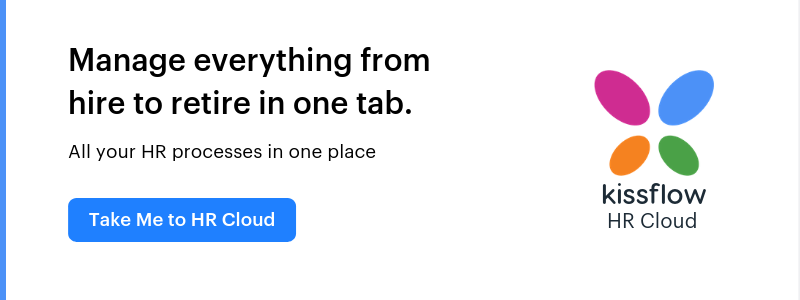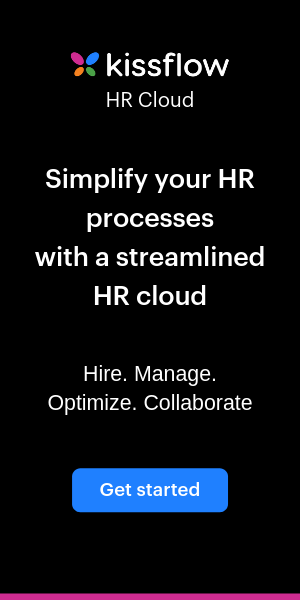When your organization scales up at a rapid pace, it can overwhelm everyone–especially your HR team. Trying to keep up with the speed of growth, you might feel like you are always playing catch up without proper strategic Human Resource management. But unless you make a plan to ramp up, you’ll always be frantically bringing up the rear.
You might be worried that you’ll never find a way to keep up with all the momentum around you. Like a lazy runner, you may think that buying a bunch of gadgets and technology will somehow make you instantly faster. But new shoes and fancy watches won’t suddenly help you keep pace with the frontrunners.

Similarly, buying expensive HR management software is not going to propel you to the front of the pack. Technology can act as a GPS device and help you stick to your plan, but if you don’t have a clear training schedule, you’ll never make it to the front.
But what if there was a time-tested training plan you could follow to help you get up to speed? One that works every time and can help even the most laggard HR teams. Strategic HR planning is the solution you need to keep pace with your expanding organization!
The importance of strategic HR planning process
HR leaders know as well as anyone that team members waste too much time on repetitive activities and manual tasks that go nowhere. Often, their objectives are too nebulous or distant to be realistic–your team gets stuck in the rut of busywork without any time to think of where they are headed. The more time your team spends pushing papers around, the less they can focus on the bigger picture.
However, a traditional long-term plan isn’t what you need. A long-term plan merely points you towards the finish line you are trying to reach. What you really need is something more organic, living, and flexible that helps you get there–what you need is an HR strategy planning process.
A strategic Human Resource planning is a formal roadmap that spells out where your organization wants to reach over the next several years, and how you’re going to get there. It isn’t a rulebook, but a training plan that spells out a method for reaching a goal. An HR strategy plan takes multiple factors into account including organizational goals, market conditions, and newly available technology.
For example, let’s say that your organization is planning to double the employee size over the next year, and your long-term plan is simply to have hired all the right people within that period.
A strategic HR plan will show you how you are going to get there. What is the current job market like? Which positions are most important? What technology can you use to get there faster? What are some potential roadblocks, and how do you plan to get around them?
There are four major steps in a strategic human resource planning process:
- Where are you now?
- Where would you like to go?
- Where is the market going?
- How do you get there?
Look at the present–What do you lack?
To start your HR planning strategy, start with where you currently are. Here are several questions you can use to take a self-assessment:
- What is going really well right now?
- Where do you struggle the most?
- Which processes are running efficiently, and which ones are a constant pain?
- Where does your team spend most of its energy?
- Does your team spend an excessive amount of time on manual tasks?
Review the products you use to manage all of your human resources processes now. Are they outdated or up-to-date? Do they really make you more efficient? Can they handle a massive scale-up, or will they break if more pressure is added?
Look into the future–What needs do you anticipate?
Success is not accidental. To keep moving forward and finish the race, you must look into the future and create a solid plan. If you aren’t intentional about the direction of your business, you aren’t likely to get there. Here are a few questions to consider when you predict the future:
- How do your current assets and liabilities align with your goals?
- Are you currently set up to handle a major influx of new people?
- How do you plan to retain your existing and new employees?
- Will a new training strategy help your team build new competencies?
If you need to quickly double your team size, can you use existing systems, or do you need to build something new? Look up systems that will help you reduce churn, keep your employees (existing and new) engaged and satisfied.
Look at the market–What trends do you see?
It’s possible to get lost in the ever-growing complexities in the market. Monitoring market trends and external factors are crucial elements of a strategic HR Plan. The following questions will help you assess market conditions:
- How is the labour market doing?
- What are your employees most likely to demand?
- Which technological changes will disrupt the industry?
- How is the economy expected to change in the future? What impact will it leave?
- What are the government regulations you need to be aware of?
Market trends aren’t restricted to technology. You need to keep an eye on salary projections, employment trends, economic condition, evolving employee expectations, and even IT policies. A good HR plan will help you take organizational decisions that are responsive to changes, such as rapid scaling, economic forces, and new regulations
Look at your workflows–Where are the delays?
The final (yet vital) step in a strategic HR plan is to perform an internal scan on tech inventory. A cursory plan sketched out on a piece of paper will likely never yield results. You have to convert your strategic plan into action. These questions will help you evaluate the current HR technology:
- Is the current HR technology adequate to accomplish the strategic goals?
- What are the frequent bottlenecks in the present HR workflow?
- Is the present HR process plagued by errors?
- What does the current HR software lack?
Devote time to learn more about recent technology disruptions such as artificial intelligence, chatbots, and how they can reinvent your existing HR processes. Rather than being wary of innovation, try experimenting with new tools, and revise your archaic processes like performance appraisal process, learning and development, and leave management.
Unleash the power of automation in HR planning
Strategic HR planning will help your organization absorb changes easily. However, before you implement strategic planning, eliminate the existing chaos in your HR Processes. With Kissflow HR Cloud businesses can conduct sophisticated analytics and bridge the execution gap between strategy and results.
Kissflow HR Cloud helps businesses integrate their HR strategies into overall organizational strategies and how to measure success. What’s more, other modules like performance management, timesheet and attendance will help organizations ascertain workforce-related risks that impact business strategy execution.

